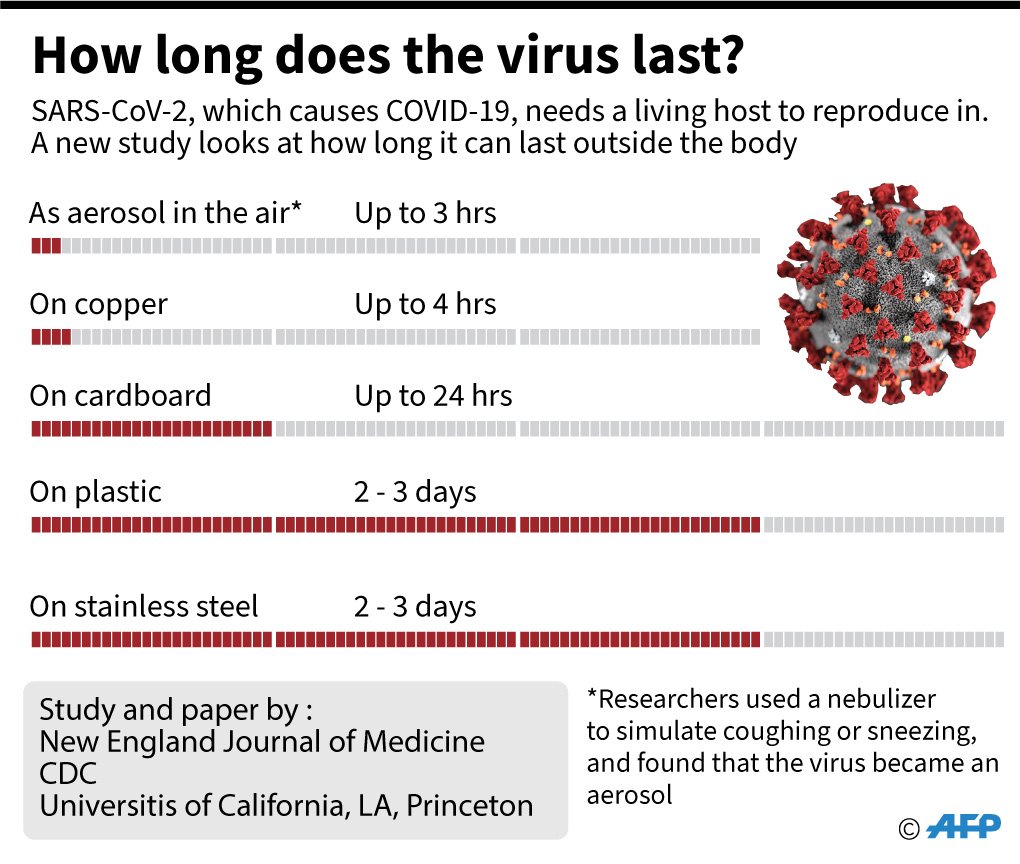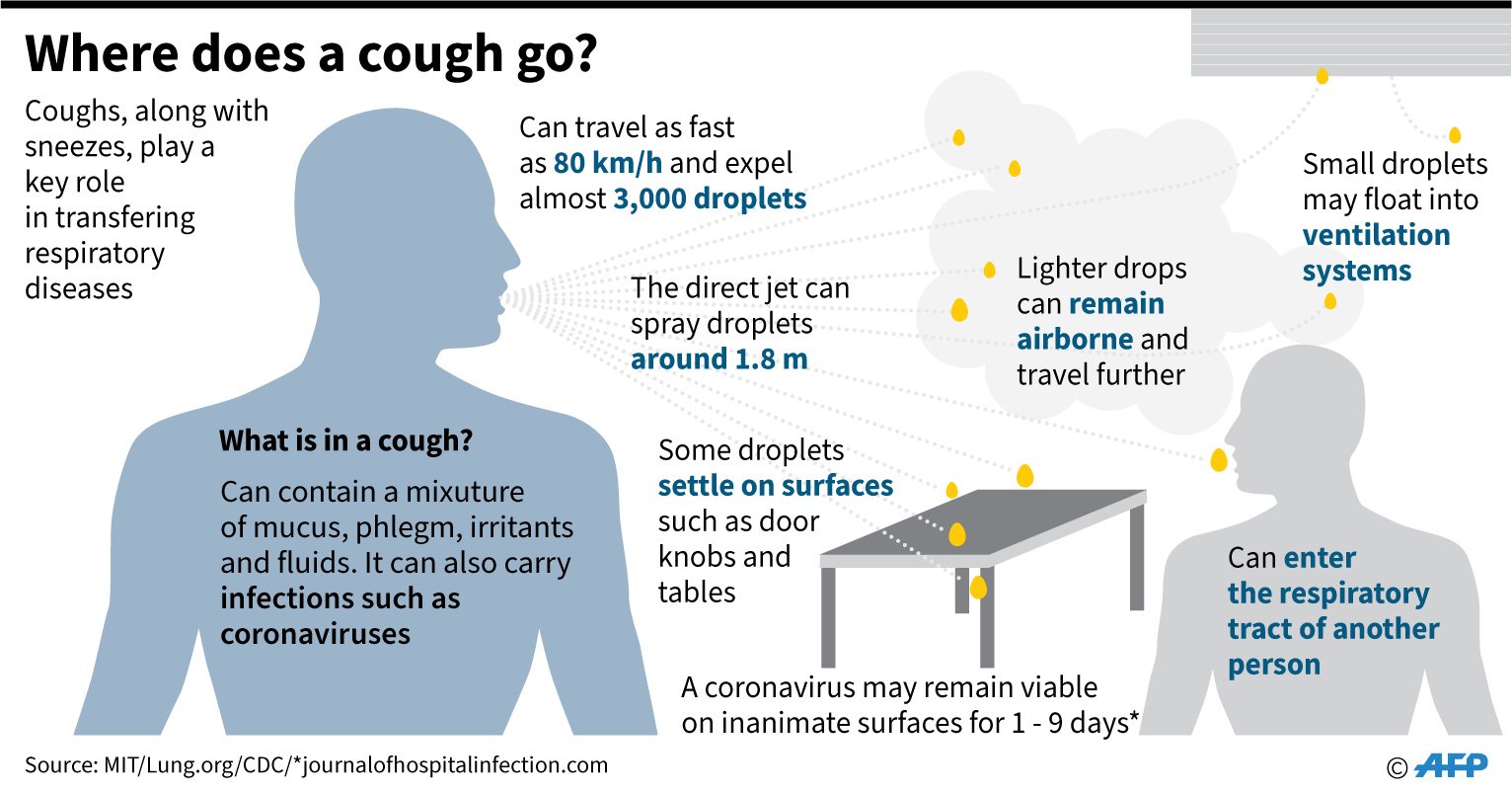The highly contagious novel coronavirus that has exploded into a global pandemic can remain viable and infectious in droplets in the air for hours and on surfaces up to days, according to a new study that should offer guidance to help people avoid contracting the respiratory illness called COVID-19.
Scientists from the National Institute of Allergy and Infectious Diseases (NIAID), part of the U.S. National Institutes of Health, attempted to mimic the virus deposited from an infected person onto everyday surfaces in a household or hospital setting, such as through coughing or touching objects.
They used a device to dispense an aerosol that duplicated the microscopic droplets created in a cough or a sneeze.
The scientists then investigated how long SARS-CoV-2 remained infectious on these surfaces, according to the study that appeared online in the New England Journal of Medicine on Tuesday.
The tests show that when the virus is carried by the droplets released when someone coughs or sneezes, it remains viable, or able to still infect people, in aerosols for at least three hours.
On plastic and stainless steel, a viable virus could be detected after three days. On cardboard, the virus was not viable after 24 hours. On copper, it took four hours for the virus to become inactivated.


In terms of half-life, the research team found that it takes about 66 minutes for half the virus particles to lose function if they are in an aerosol droplet.
That means that after another hour and six minutes, three-quarters of the virus particles will be essentially inactivated but 25% will still be viable.
The amount of viable virus at the end of the third hour will be down to 12.5%, according to the research led by Neeltje van Doremalen of the NIAID’s Montana facility at Rocky Mountain Laboratories.
On stainless steel, it takes 5 hours 38 minutes for half of the virus particles to become inactive. On plastic, the half-life is 6 hours 49 minutes, researchers found.
On cardboard, the half-life was about three and a half hours, but the researchers said there was a lot of variability in those results “so we advise caution” interpreting that number.
The shortest survival time was on copper, where half the virus became inactivated within 46 minutes.
As part of their experiments, the researchers compared the stability of SARS-CoV-2 to that of SARS-CoV-1 under the same experimental circumstances and found similar results.
“This indicates that differences in the epidemiological characteristics of these viruses probably arise from other factors,” they conclude, “including high viral loads in the upper respiratory tract and the potential for persons infected with SARS-CoV-2 to shed and transmit the virus while asymptomatic.
Last Updated on Mar 18, 2020 6:02 pm










Discussion about this post